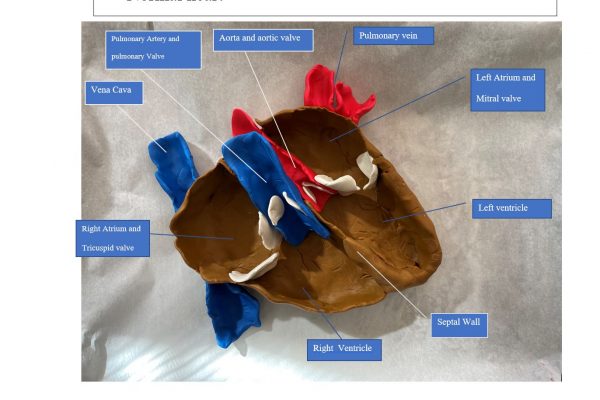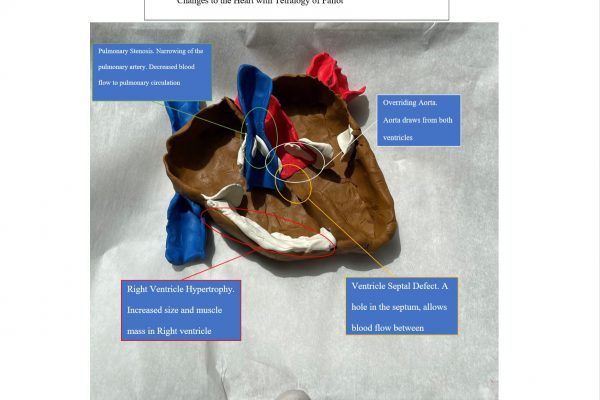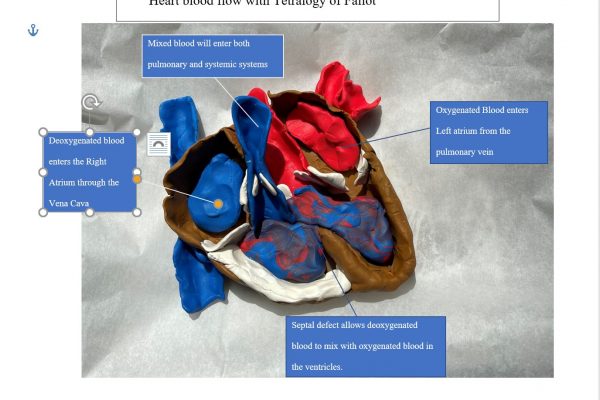Cross-Section of the heart made out of clay. I made a “normal” heart for comparison and a heart with the defects of Tetralogy of Fallot. The last model shows how cardiac circulation is changed due to Tetralogy of Fallot, The atriums are unaffected, the change occurs at the ventricles. The changes are narrowing of the pulmonary artery, a hole (or multiple holes) in the ventricle septal wall, right ventricular hypertrophy, and overriding aorta.




Tetralogy of Fallot (ToF) is a congenital heart defect, which affects the circulation of oxygenated and deoxygenated blood through the heart. ToF consists of four heart defects, Ventricular Septal Defect, Right Ventricular Outflow Tract Obsrtuction, Overriding Aorta, and Right Ventricular Hypertrophy, which compound eachother.
Ventricular Septal Defect, or VSD, is characterized by a hole between the right and left ventricles, which allows for deoxygenated blood from the right ventricle to flow into the oxygenated blood of the left ventricle, or vice versa, depending on the pressure in the pulmonary circut. Right Ventricular Outflow Tract Obstruction, or RVOTO, is the narrowing of the pulmonary valve or artery, which causes an increase of pressure in the right ventricle that leads to deoxygenated blood flowing into the systemic circut via the VSD. RVOTO is the main factor for determining the severity of ToF, and can lead to hypoxemia due to a lack of blood flow through the pulmonary circut. The next defect is Right Ventricular Hypertrophy (RVH), which is an increase of muscle mass and size of the right ventricle as it compensates for the pressure created by RVOTO. The final defect is overriding aorta, which occurs when the aorta becomes enlarged and rests over the VSD, which allows for deoxgenated blood to flow into the systemic circut.
ToF is usually diagnosed while the child is young, sometimes as early as pregnancy, while in rare cases is diagnosed in adulthood. Patients will experience “Tet spells” during physical activity, in which the patient can be cyanotic and short of breath due to the lack of blood through the pulmonary circut. ToF is treated with surgery depending on the severity of the case, and is treated by patching the VSD or placing a shunt to increase pulmonary flow.